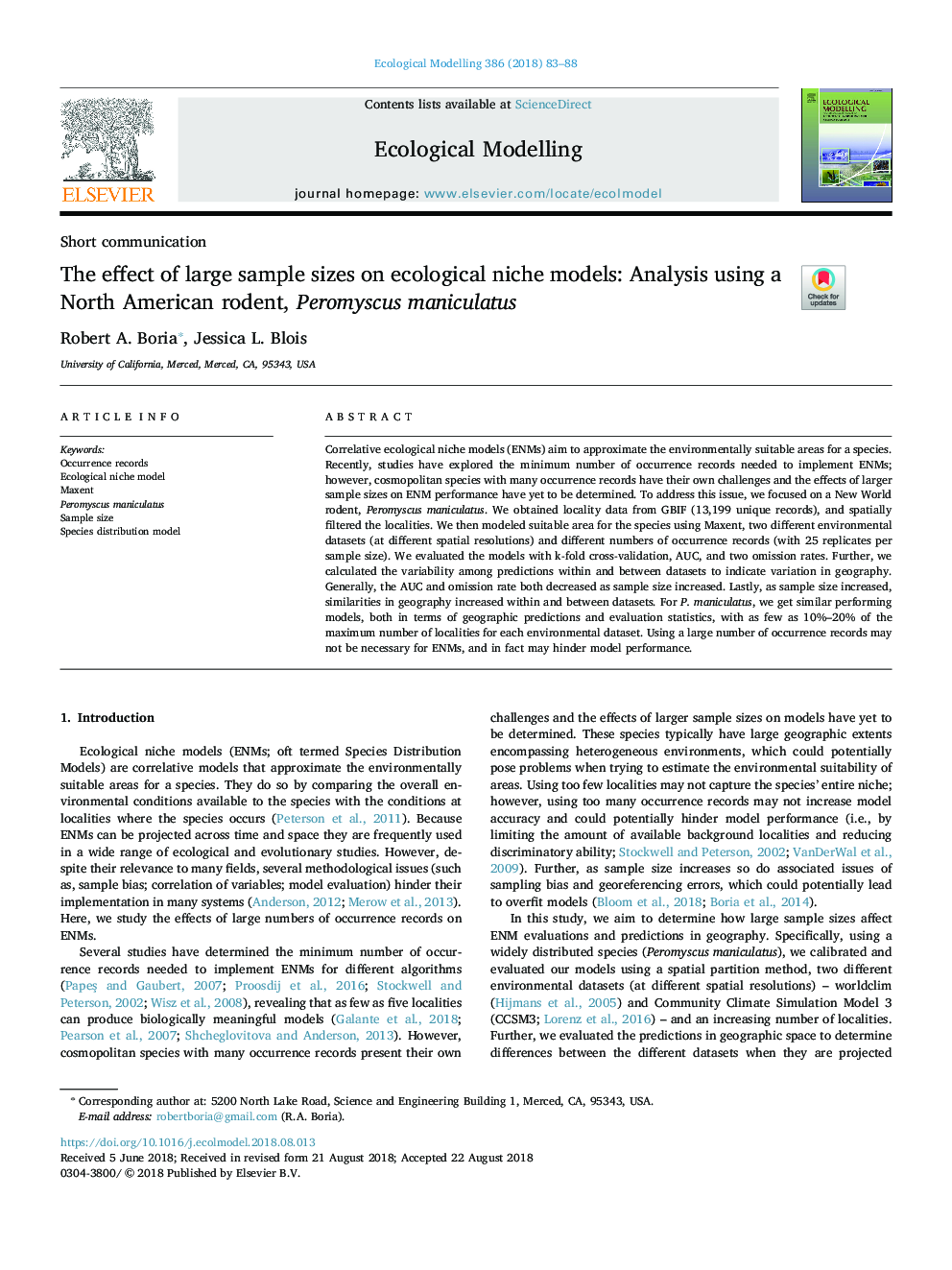| Article ID | Journal | Published Year | Pages | File Type |
|---|---|---|---|---|
| 10110083 | Ecological Modelling | 2018 | 6 Pages |
Abstract
Correlative ecological niche models (ENMs) aim to approximate the environmentally suitable areas for a species. Recently, studies have explored the minimum number of occurrence records needed to implement ENMs; however, cosmopolitan species with many occurrence records have their own challenges and the effects of larger sample sizes on ENM performance have yet to be determined. To address this issue, we focused on a New World rodent, Peromyscus maniculatus. We obtained locality data from GBIF (13,199 unique records), and spatially filtered the localities. We then modeled suitable area for the species using Maxent, two different environmental datasets (at different spatial resolutions) and different numbers of occurrence records (with 25 replicates per sample size). We evaluated the models with k-fold cross-validation, AUC, and two omission rates. Further, we calculated the variability among predictions within and between datasets to indicate variation in geography. Generally, the AUC and omission rate both decreased as sample size increased. Lastly, as sample size increased, similarities in geography increased within and between datasets. For P. maniculatus, we get similar performing models, both in terms of geographic predictions and evaluation statistics, with as few as 10%-20% of the maximum number of localities for each environmental dataset. Using a large number of occurrence records may not be necessary for ENMs, and in fact may hinder model performance.
Related Topics
Life Sciences
Agricultural and Biological Sciences
Ecology, Evolution, Behavior and Systematics
Authors
Robert A. Boria, Jessica L. Blois,
